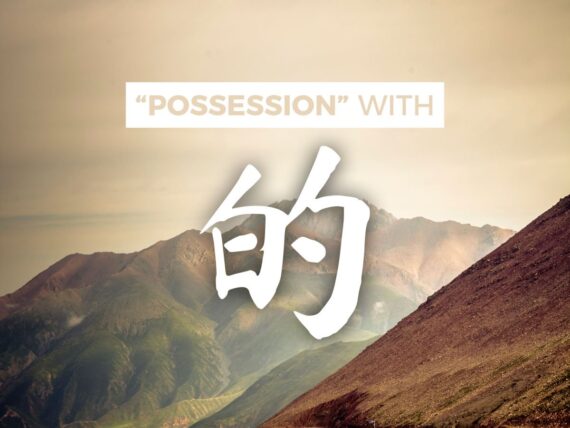“And” or “With” In Chinese: Chinese Character 和

The Chinese character 和 (hé) is either a conjunction (“connector”) or a preposition (“relator”). The difference comes down to the sentence structure. If the subject of the sentence is something like “你和我 Nǐ hé wǒ – You and I,” then 和 (hé) is a conjunction. However, if 和 (hé) is in a phrase that modifies another part of the sentence, it’s a preposition. Here’s an example as a conjunction:
With in Chinese – Sentence 1:
我和儿子上午过来吗? – Level 13
Wǒ hé érzi shàngwǔ guòlai ma?
Shall my son & I come over in the morning?
Here we have a conjunction usage of 和 (hé), because “我和儿子 (wǒ hé érzi)” isn’t modifying anything, but rather is the “Host” (subject) of the sentence. 过来 (guòlái) is the “Does What” (verb), and “上午 (shàngwǔ)” is the “Guest” (object). Usually, textbooks will translate “和 (hé)” as “and,” but as you can see from this example, it’s also sometimes more appropriate to think of it as “with.”
Only when 和 (hé) is in a part of the sentence that is modifying the “Host,” “Does What,” or “Guest” do we classify it as a preposition. Here are some examples:
With in Chinese – Sentence 2:
我想要和一个美女在一起。 – Level 19
Wǒ xiǎngyào hé yíge měinǚ zài yīqǐ
I want to be with a beautiful woman.
Here we see “和 (hé)” as a preposition. Why? Because the primary “Host – DoesWhat – Guest” (subject – verb – object) in this sentence is “我 – 想要 – 美女. (Wǒ – xiǎng yào – měinǚ.)” Everything else is modifying “美女 (měinǚ)”.
Unsurprisingly, there’s a bit more to this sentence than “I want a beautiful woman.” Surrounding 美女 (měinǚ) with “和一个 (hé yīgè)”&” 在一起 (zài yīqǐ)” expresses the relationship (hence the relator usage) between the subject’s desires “我想要 (wǒ xiǎng yào)” and the 美女 (měinǚ). It’s with her “和 (hé)”.
Sentence 3:
我看见你能用中文和中国人聊天儿。 – Level 22
Wǒ kànjiàn nǐ néng yòng zhōngwén hé zhōngguó rén liáotiānr.
I saw that you can talk to Chinese people in Chinese.
This sentence has multiple verbs and verb phrases, and 和 (hé) isn’t in the context of a Host or Guest in any of them.
Phrase 1:
Host: 我
Does What: 看见
Guest: 你
Phrase 2:
Host: 你
Does What: 能用
Guest: 中文
Phrase 3:
Host: 你
Does What: 聊天儿
In this case, 和 (hé) helps to modify “聊天儿. (liáotiān er)” It’s relating “你 (nǐ)” and “聊天儿 (liáotiān er)” by saying who “你 (nǐ)” is speaking with “中国人” (zhōngguó rén).
It’s fun to breakdown sentences with multiple verbs like this by starting from the primary sentence and building up:
你·聊天儿。
你·和中国人·聊天儿。
你·用中文·和中国人·聊天儿。
你·能·用中文·和中国人·聊天儿。
我·看见·你·能·用中文·和中国人·聊天儿。
Each sentence is grammatically correct, but adding those extra words changes the meaning significantly. Ultimately, this sentence is about the speaker remarking on his/her recognition of your abilities, which is why 我看见你 (wǒ kànjiàn nǐ) comes first.
With in Chinese – Sentence 4:
很多人都等着和她拍照。 – Level 25
Hěn duō rén dōu děngzhe hé tā pāizhào.
There are a lot of people waiting to take a picture with her.
We know that 和 (hé) is a preposition here because its function is to show the relationship between taking pictures “拍照 (pāizhào)” and who/what is having their photo taken “她 (tā)”.
As a final point, whether it’s the conjunction or preposition usage, you can replace “和 hé” with “跟 gēn” or “与 yǔ.” You can use “和 hé “and “跟 gēn” interchangeably (with one exception), but “与 yǔ” is for more formal contexts. We’ll leave you with a couple of examples showing this:
And in Chinese – Sentence 5:
我跟/和他是朋友。 – Level 32
Wǒ gēn/hé tā shì péngyǒu.
He and I are friends.
And in Chinese – Sentence 6:
人与动物的区别就是人能制造和使用劳动工具。 – Level 51
Rén yǔ dòngwù de qūbié jiùshì rén néng zhìzào hé shǐyòng láodòng gōngjù.
The difference between humans and animals is that people can create and use tools for labor.
This sentence is so formal it could easily have come from a textbook, hence why 与 yǔ is preferred compared to 和 hé or 跟 gēn.
The One 跟 gēn/和 hé Exception
As we mentioned above, 跟 (gēn) & 和 (hé) can be used interchangeably with one exception. Since “跟 (gēn)” also carries the meaning of “follow”, there are certain commands where you can use “跟 (gēn)” but not “和 (hé)”.
Sentence 7:
跟我走。 – Common Phrase
Gēn wǒ zǒu.
Follow me.
In this sentence, 和 (hé) isn’t correct because there’s no sense of “follow” inherent in the character. However, if you add “一起 (yīqǐ)”, you can use either:
Sentence 8:
跟/和我一起走。
Gēn/Hé wǒ yīqǐ zǒu.
Come with me.
Starting in Phase 3 of The Mandarin Blueprint Method video course, you’ll receive sentence flashcards tagged with their respective grammar points. This makes finding example sentences for each structure as simple as a click. To learn more, start your free trial.








